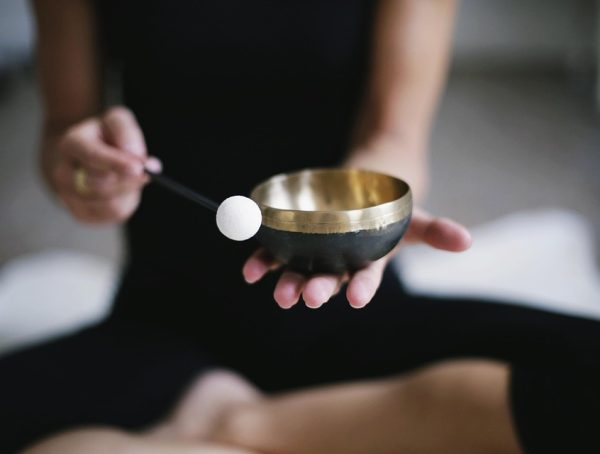Three Types of Meditation: Which One Is Right for You?
Meditation has now become a household term, and for good reason. As the pace of modern life accelerates, many are seeking solace in the serene world of mindfulness and inner peace. Yet, amid the plethora of meditation styles available, selecting the right one for your needs can feel overwhelming. Here, we’ll explore three dominant types of meditation, their unique benefits, and actionable steps to help you choose the right practice for you.
1. Mindfulness Meditation
Overview:
Mindfulness Meditation focuses on developing an acute awareness of the present moment. Rooted in Buddhist traditions, it involves observing thoughts, sensations, and emotions as they come and go without judgment. Rather than aiming to eliminate thoughts, mindfulness teaches us to create space around them, fostering acceptance and understanding.
Benefits:
- Reduces stress and anxiety
- Improves focus and concentration
- Promotes emotional health and self-awareness
Action Steps:
- Find Your Space: Choose a quiet and comfortable spot, free from distractions.
- Set a Timer: Begin with short sessions, around 5-10 minutes, and gradually increase to 20-30 minutes as you become more comfortable.
- Focus on Your Breath: Close your eyes and pay attention to your breath. Notice the rise and fall of your abdomen, the coolness of air entering your nostrils, or the warmth as you exhale.
- Acknowledge Thoughts: When your mind wanders (and it will), gently bring your focus back to your breath without self-criticism.
2. Transcendental Meditation (TM)
Overview:
Transcendental Meditation is a more structured form of meditation that emphasizes the use of a mantra—a specific word or sound related to spirituality. TM is practiced for 20 minutes twice a day while sitting comfortably with your eyes closed, promoting a deep state of restful awareness.
Benefits:
- Increases creativity and problem-solving skills
- Reduces stress, anxiety, and depression
- Enhances overall cognitive function
Action Steps:
- Learn the Technique: While you can find many resources online, TM is best learned through certified instructors. Consider enrolling in a course to fully grasp the method.
- Choose Your Mantra: Upon learning through an instructor, you’ll be given a personal mantra to use during your practice.
- Consistency is Key: Allocate time twice a day, ideally in the morning and early evening, to practice. Be consistent as this is crucial for effectiveness.
- Create a Ritual: Find a comfortable place, sit in a relaxed position, and silently repeat your mantra for the duration of your session.
3. Loving-Kindness Meditation (Metta)
Overview:
Loving-Kindness Meditation, known as Metta Bhavana, focuses on generating feelings of compassion and love towards oneself and others. This practice involves repeating phrases of goodwill and kindness, enhancing emotional well-being and fostering empathy.
Benefits:
- Boosts positive emotions
- Decreases negative affects and feelings of isolation
- Encourages stronger social connections
Action Steps:
- Set Your Intention: Begin your practice by directing kindness towards yourself. For example, say silently, “May I be happy, may I be healthy, may I be safe, may I live with ease.”
- Expand Your Circle: Gradually extend your loving kindness to loved ones, acquaintances, and even those you may find challenging.
- Use Visualizations: Picture the individuals in your life and focus on sharing genuine wishes for their happiness and well-being.
- Regular Practice: Set aside time daily for Loving-Kindness Meditation, even if just for 10 minutes, to help strengthen your feelings of gratitude and compassion.
What’s Right for You?
Choosing the right type of meditation involves introspection and experimentation. Here are some questions to help narrow down your options:
- Stress Relief: Are you looking for a way to reduce anxiety and manage stress? Mindfulness Meditation may be your best choice.
- Structured Guidance: Do you prefer a more structured format with specific techniques? Consider Transcendental Meditation.
- Compassionate Connections: Are you looking to nurture feelings of kindness and empathy? Loving-Kindness Meditation might resonate with you.
A Final Thought
No matter which form of meditation you ultimately choose, it’s essential to remember that the act of engaging in meditation itself is a personal journey. There’s no right or wrong way; listen to your body and your needs.
“Health is not just about what you eat. It’s about what you think and feel as well.”
For more insights into wellness and mindfulness, follow Kevin on Instagram at @KSteineman. You’re on a journey towards a healthier version of yourself, one mindful moment at a time.
You might also like
More from Meditation
The Role of Mantras in Transcendental Meditation: A Deep Dive
The Role of Mantras in Transcendental Meditation: A Deep Dive Transcendental Meditation (TM) has garnered a significant following across the globe, …
The Science Behind Meditation: Improving Mental Health Naturally
The Science Behind Meditation: Improving Mental Health Naturally In today's fast-paced world, the pursuit of mental wellness has become paramount. Thousands …
Understanding the 7 Types of Meditation for Beginners
Understanding the 7 Types of Meditation for Beginners: A Path to Inner Peace Meditation has become a popular practice in recent …


































